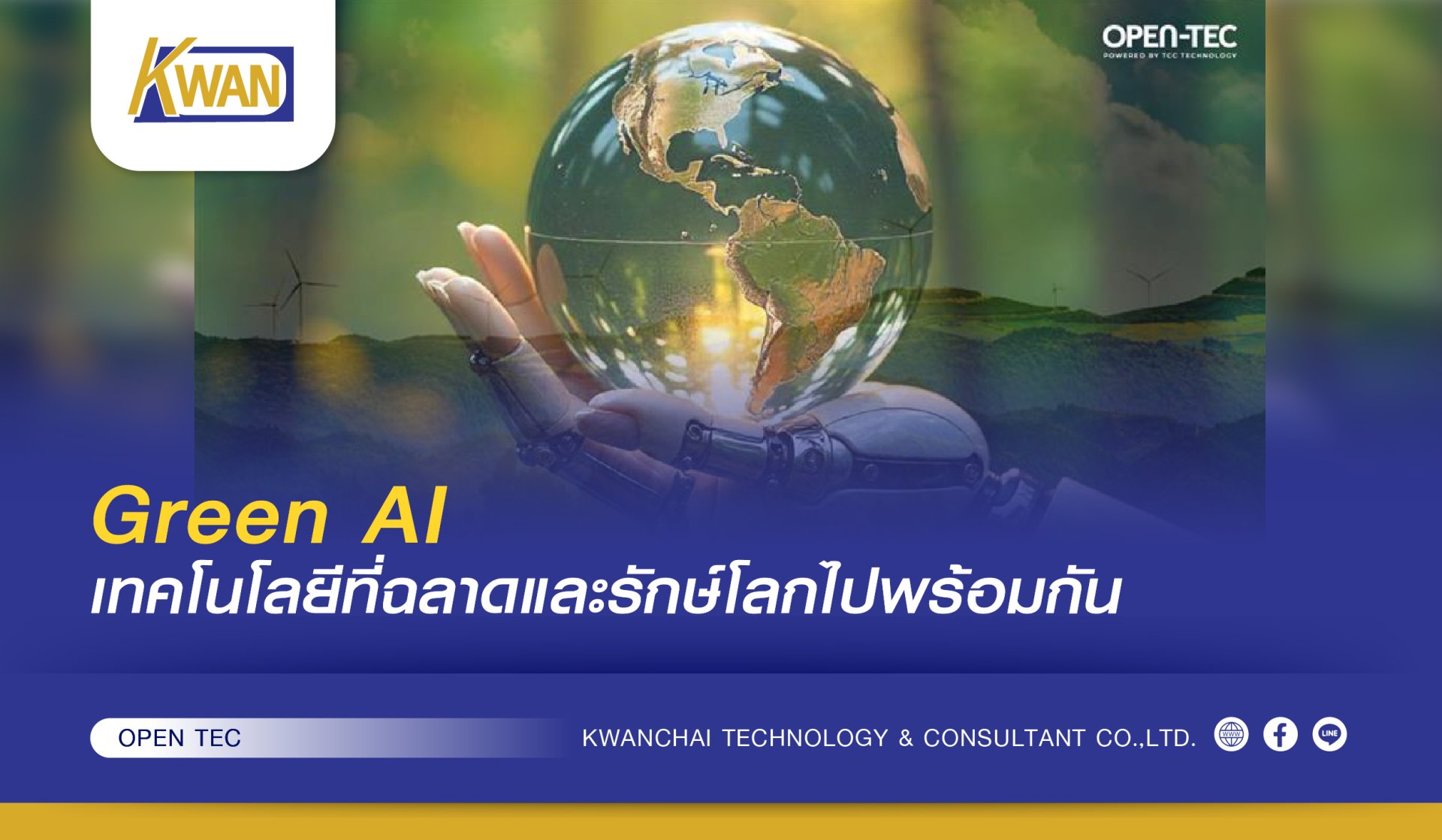Green AI: Smarter Technology That Also Protects the Planet

In recent years, AI has become one of the most talked-about technologies from ChatGPT answering questions to AI generating images, videos, and even assisting doctors in diagnosing diseases. However, behind this intelligence lies a high environmental cost.
According to a report by Knowledge at Wharton, training GPT-3 consumed around 1,287 megawatt-hours (MWh) of electricity and emitted roughly 502 tons of CO equivalent to the annual emissions of about 112 gasoline-powered cars. And this is only for training; real-time processing of user queries can account for up to 60% of AIs total energy consumption, not including continuous updates and improvements.
Today, OPEN-TEC a knowledge-sharing platform under TCC Technology Group explores the importance of Green AI, a concept we can no longer overlook.
The Beginning of Green AI
Amid the growing energy challenges of AI, the idea of Green AI emerged. It emphasizes that AI progress should not be measured only by accuracy or intelligence, but also by energy costs and environmental impact. The goal of Green AI is to build systems that deliver strong performance while consuming fewer resources.
According to IBM, one key approach is developing Small Language Models (SLMs) compact models that require less memory and computational power than large-scale models. SLMs are ideal for resource-constrained environments such as edge devices, mobile applications, or even offline use.
Another important technique is model compression, which reduces model complexity while maintaining acceptable performance.
Big Tech Embraces SLMs
The concept of Green AI is no longer confined to academia; its being adopted by major technology companies. Both Google and Microsoft are prioritizing the development of SLMs to cut energy consumption:
Microsoft introduced Phi, a highly efficient model that uses minimal computational resources and significantly lowers energy use and carbon emissions.
Google unveiled Gemma, an SLM that supports text, images, audio, and video, and can run directly on end-user devices. This approach reduces data transfer and distributes energy usage to edge devices instead of centralized systems.
The rise of SLMs represents not only AI innovation but also concrete steps by tech giants to minimize environmental impact.
AI in Everyday Life: The Hidden Costs
Some may think Green AI concerns only large corporations, but AI already plays a bigger role in our daily lives than we realize. From smartphones powered by AI search, to autonomous electric vehicles, to smart home devices responding to voice commands every AI interaction consumes hidden energy.
If overlooked, this invisible energy demand could have lasting impacts on the environment and societys overall costs.
Final Thoughts
Smarter AI is a symbol of technological progress. But that progress loses meaning if it comes at the expense of the planet. Green AI is not just an option it is a necessity. It ensures that the AI systems of the future will not only be intelligent in solving problems, but also wise in preserving the world we live in.
Source: OPEN-TEC / TCC Technology Group



